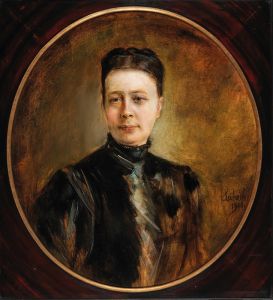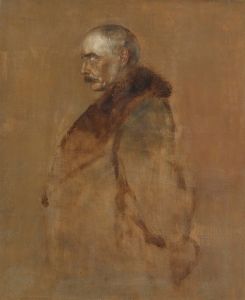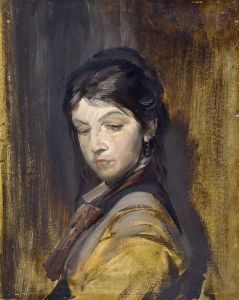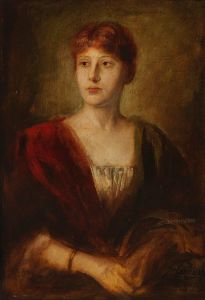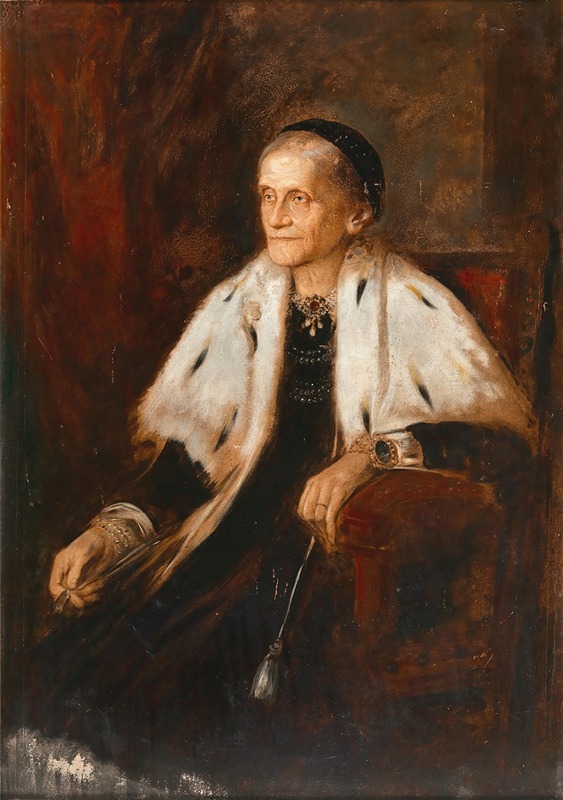
Ludovika, Duchess in Bavaria
A hand-painted replica of Franz von Lenbach’s masterpiece Ludovika, Duchess in Bavaria, meticulously crafted by professional artists to capture the true essence of the original. Each piece is created with museum-quality canvas and rare mineral pigments, carefully painted by experienced artists with delicate brushstrokes and rich, layered colors to perfectly recreate the texture of the original artwork. Unlike machine-printed reproductions, this hand-painted version brings the painting to life, infused with the artist’s emotions and skill in every stroke. Whether for personal collection or home decoration, it instantly elevates the artistic atmosphere of any space.
Franz von Lenbach was a prominent German painter known for his portraits of notable figures in the 19th century. One of his works, "Ludovika, Duchess in Bavaria," captures the likeness of Duchess Ludovika, a member of the Bavarian royal family. Born on August 30, 1808, Ludovika was the daughter of King Maximilian I Joseph of Bavaria and his second wife, Caroline of Baden. She was married to Duke Maximilian Joseph in Bavaria, and together they had ten children, including the famous Empress Elisabeth of Austria, commonly known as "Sisi."
Franz von Lenbach, born on December 13, 1836, in Schrobenhausen, Bavaria, was a celebrated portraitist of his time. He studied at the Academy of Fine Arts in Munich and later traveled to Italy, where he was influenced by the works of the Old Masters. Lenbach's style is characterized by its realism and attention to detail, which made him a sought-after portrait artist among European nobility and intellectuals.
The painting "Ludovika, Duchess in Bavaria" exemplifies Lenbach's skill in capturing the essence and stature of his subjects. While specific details about the creation date and current location of this particular painting are not widely documented, Lenbach's body of work often reflects the social and political milieu of his era. His portraits are known for their psychological depth and ability to convey the personality and status of the sitter.
Ludovika's life was marked by her role in the Bavarian royal family and her influence as a matriarch. Her marriage to Duke Maximilian Joseph was significant in strengthening ties within the European aristocracy. Despite the challenges of her time, including political upheavals and personal tragedies, Ludovika maintained her position and influence within the royal circles.
Lenbach's portrayal of Ludovika would have been an important commission, reflecting her status and the esteem in which she was held. His ability to depict the nobility with both grandeur and subtlety made his portraits highly valued. Lenbach's works are often noted for their rich color palette and the lifelike representation of textures, such as fabrics and skin tones, which would have been evident in his depiction of the Duchess.
Throughout his career, Lenbach painted numerous portraits of influential figures, including Otto von Bismarck and Pope Leo XIII. His works are housed in various museums and private collections, attesting to his enduring legacy as a master portraitist. The painting of Ludovika, Duchess in Bavaria, would be a part of this illustrious collection, contributing to the historical record of European aristocracy through art.
In summary, "Ludovika, Duchess in Bavaria" by Franz von Lenbach is a testament to the artist's expertise in portraiture and his ability to capture the essence of his subjects. While specific details about this painting are limited, Lenbach's reputation and the historical significance of his subjects provide insight into the importance of such works in the context of 19th-century European art and society.






